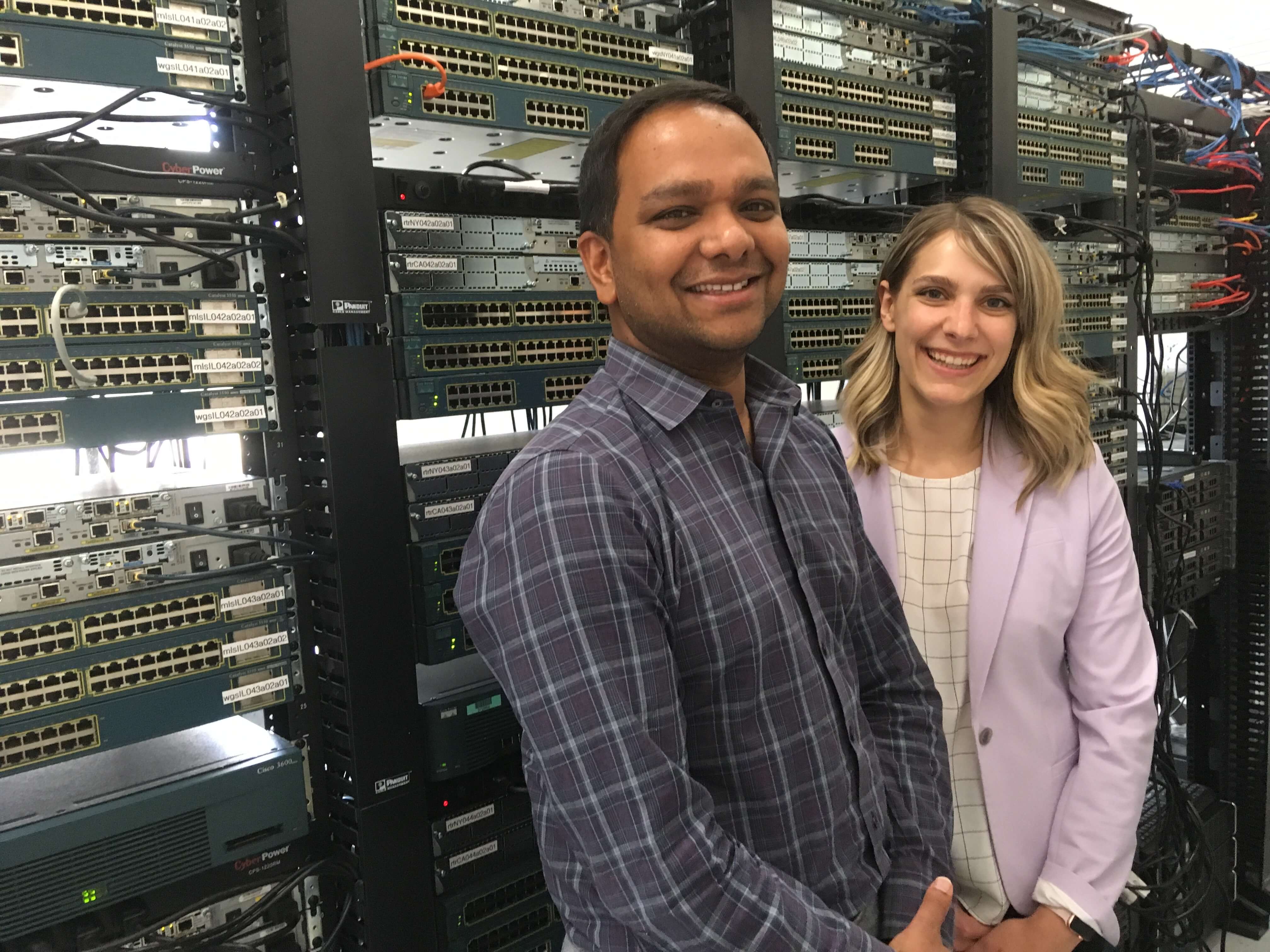By Katie Moritz | Rewire
On a sunny afternoon in an airy refurbished warehouse, Gregery Ball plugs cables into a wall of blinking routers, switches, servers and firewalls. Ball already works in the IT field, but, in his off time, he’s training for the next step in his career.
“I’m into computers already but I wanted to learn more about the network side of it, because I want to know how things work… in the background,” he said.

Ball is one of about 30 in the first class of trainees at Transcend IT, a relatively new nonprofit that’s trying to diversify the information technology workforce in its home state of Minnesota. It aims to both train women and people of color for in-demand IT jobs and get them placed in those jobs, “(connecting) those who have been left out of the labor force with skills and support they need to join the rapidly growing field of Information Technology,” all free of charge to students, the organization’s website states.
For Ball, 42, the new program is “honestly a match made in heaven.” Having worked at an IT help desk for two years, he was already studying for a certification he needs to become a network analyst, the person who actually designs the technology systems we use at work every day.
He started training at Transcend IT just a few weeks ago, and he’s already building a network.
“I have learned a lot since then, I would say its going great,” Ball said. “I got to work on routers, switches and terminal access devices… I’m learning how to make all those talk over a network.”
When it comes to internet connectivity , most people “just plug into the wall and (think) everything works magically,” he said. But there are “routers, servers that people don’t know (about) in the background. I’m learning what that actually means.”
Addressing a glaring problem
In the main room of Transcend IT’s St. Paul, Minnesota, training center, three other students work at their own pace.
After three months of training and mentorship, the organization will work with partner companies to find them jobs, said Transcend IT CEO Adrian Ratnayake. When he and Director of Advancement Katy Nordhagen started the organization just a little over a year ago, Ratnayake left his job running an IT training and placement firm.
“I had an opportunity to basically exit the company and sell my shares and do what I’ve always wanted to do, which was fix the representation gap in the IT (industry),” he said.
During his years in the field, he worked as an independent consultant on IT teams that contained very few women or people of color. Sometimes, he would be the only person of color working on a project.
In the Twin Cities of Minneapolis and St. Paul, women make up only 25 percent of IT professionals, according to Transcend IT. (U.S. numbers mirror this—26 percent of computing jobs are held by women, according to the National Center for Women and Informational Technology.) And more than 75 percent of people in the field are white in the Twin Cities. (In the U.S., almost 69 percent are white—only 14 percent of people with computer systems jobs are black or Latino, according to Bureau of Labor Statistics employment data.)
“It was something I felt wrong about… but there was nothing I could do at the time,” Ratnayake said. “It always nagged at me, I always wanted to do something about it. But the time wasn’t right.”
In addition to balancing the scales on a local and national diversity problem, Transcend IT also hopes to fill a need for more trained IT professionals—37 percent of IT jobs in the Twin Cities are left unfilled because of skill gaps, according to the organization, making it a great sector to focus on. A lot of Transcend IT’s trainees already work on an IT help desk, but find it to be a dead-end job without much on-the-job training.
“It’s still a new enough sector that we don’t ever see a lack of open positions, or a lack of organizations needing those types of skills,” Nordhagen said.
Flexible but supportive
But how can working adults with varied schedules all move through a three-month training program? Ratnayake and Nordhagen said the Transcend IT classroom is set up for flexibility. The training center is open from 8 a.m. to 8 p.m., and trainees can set their own schedules to mesh with their work days. The center is accessible via mass transit. And trainees can move through the program at different paces and in different orders.

What happens once the trainees are done with the program is another thing that sets Transcend IT apart from other workforce training programs, Ratnayake said. Instead of cutting the students loose to fend for themselves, the program will work with companies to place them in jobs and continue to support them as their careers progress.
“There are some places that are doing training, but the placement is left up to the individual,” Ratnayake said. “The placement itself is an actual skill.”
Because of Transcend IT’s model, “they can put their heads down and focus (on training) and we can take care of all those intangible details and align the energies,” he said.
Oftentimes, workplace training programs don’t keep track of their students once they move on, Nordhagen said. Transcend IT will keep in contact with its graduated students, and facilitate support groups for them as they move through their careers.
“Sometimes we’re preparing people for the reality that they might be one of the 10 percent of people that look like them (on the job),” Nordhagen said. “We’re trying to create that support outside of their workplace.”
This article is part of “Living for the City,” a Rewire initiative made possible by The John S. and James L. Knight Foundation.
![]() This article originally appeared on Rewire.
This article originally appeared on Rewire.
© Twin Cities Public Television - 2018. All rights reserved.
Read Next



